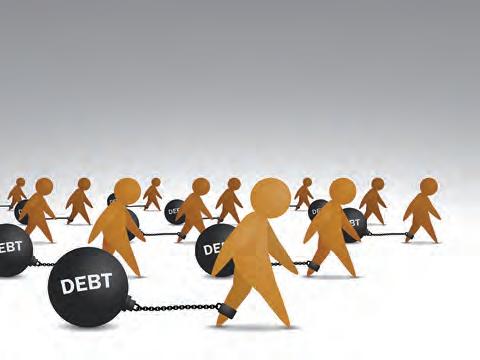“c02DomesticMacroeconomicGoals_PrintPDF” — 2022/7/23 — 6:51 — page 112 — #12
Some other aspects of indicators associated with economic activity
PR O
O
FS
In addition to GDP, there are many other indicators of changing economic activity and performance, each with certain characteristics: • Lagging indicators of economic activity. Lagging indicators of economic activity tell the reader only at what level activity was occurring some time ago. These statistics do not tell us what the economy is doing right now. GDP falls into this lagging indicator category, since by the time quarterly production statistics are collected by the ABS, processed and released, typically three months or so have elapsed. Other lagging indicators of changing levels of economic activity might include the unemployment rate and the inflation rate (the general rise in the prices paid for a basket of consumer goods and services). • Coincident indicators of economic activity. Coincident indicators move very closely with actual changes in the level of economic activity. They are published regularly at shorter intervals and thus more or less tell us what is happening right now. • Leading indicators of economic activity. Leading indicators seek to predict where the economy may be heading in the near future. While not completely reliable, they often forecast a general change in activity before it actually occurs. Indicators in this category could include the new housing approvals and monthly indexes of consumer and business confidence or sentiment. Looking for patterns in indicators
PA
G
E
When examining statistical indicators, economists are on the lookout for patterns in the data. These could involve: • long-term or general trends over perhaps 10 or 20 years • short- to medium-term cycles, perhaps over 1–3 years • seasonal patterns that occur at the same time each year.
Resources
Resourceseses
TE
D
As students, when examiners ask you to describe a graph or table, you might look for whether the overall long-term trend is up, down. or perhaps unchanged. You might also check out whether there are any cyclical patterns with ups or downs lasting just a year or so, and often it is a good idea to include statistics to support your claims.
CO RR EC
Weblinks Economic growth Measuring economic performance — growth, inflation and unemployment Real GDP and the GDP deflator The Economic Lowdown Video Series Measuring economic activity GDP — measuring economic growth Measuring the economy
2.3 Activities
Students, these questions are even better in jacPLUS
U
N
Receive immediate feedback and access sample responses
Access additional questions
Find all this and MORE in jacPLUS
112
Key Concepts VCE Economics 2 Units 3 & 4 Eleventh Edition
Track your results and progress
Lagging indicators show changes in economic activity some time after the event has occurred because they take time to collect and process data and/or respond to changes in economic activity (e.g. GDP). Leading indicators allow economic forecasts or predictions to be made about the likely future level of economic activity (e.g. consumer confidence).

































